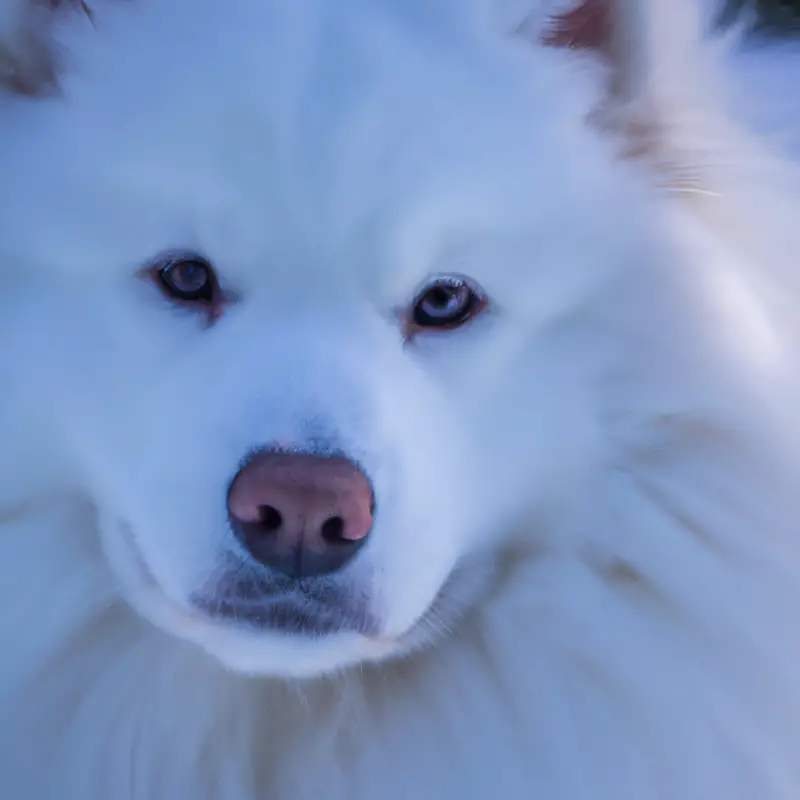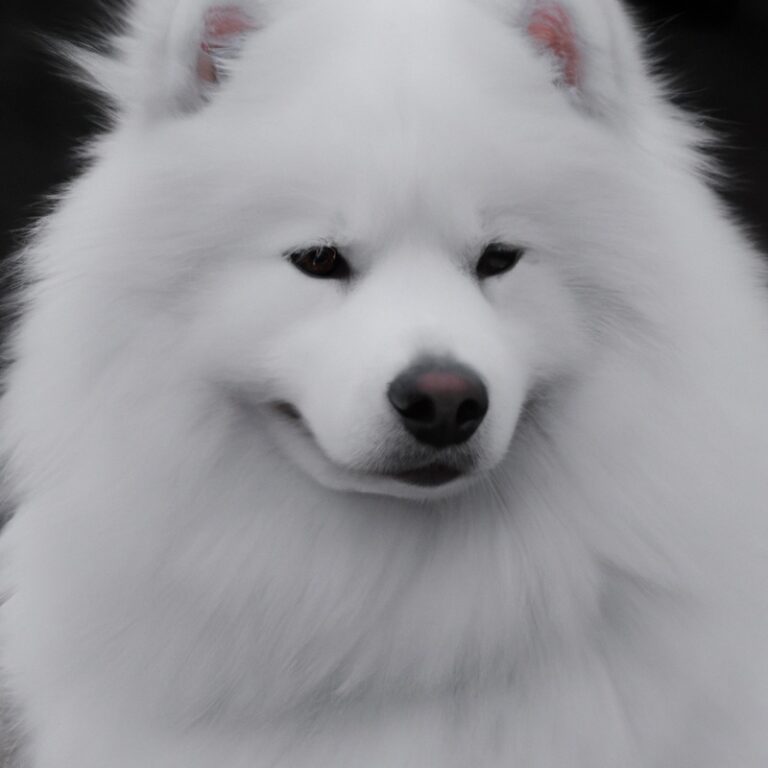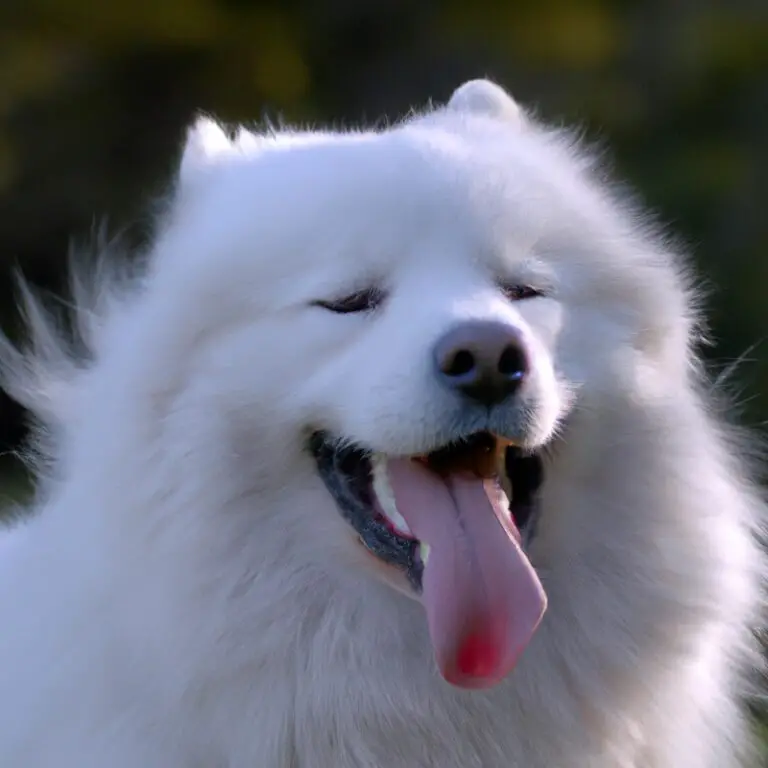How To Prevent Samoyed From Jumping On Visitors?
Key Takeaways:
- Consistent training is key to preventing a Samoyed from jumping on visitors.
- Providing adequate mental and physical exercise can help reduce a Samoyed’s jumping behavior.
- Using positive reinforcement techniques can effectively discourage a Samoyed from jumping on visitors.
- Implementing boundaries and teaching your Samoyed alternative behaviors can deter jumping behavior.
Are you tired of your adorable Samoyed greeting your guests with overwhelming excitement and a leap into their arms?
It’s no surprise that these lovely and friendly dogs have a tendency to jump on visitors, but fear not! As an expert in canine behavior and training, I’m here to share some valuable insights on preventing this behavior.
In this article, we’ll discuss the reasons behind Samoyeds’ jumping tendencies, the importance of curbing this behavior, effective training methods, and practical tips for managing your pup’s behavior during visitor arrivals.
Get ready to create a calm and controlled environment that your guests will appreciate!
| Methods | Effectiveness | Difficulty Level | Additional Tips |
| 1. Consistent Training | High | Medium | – Use positive reinforcement – Use commands like “sit” or “stay” – Reward good behavior |
| 2. Ignore and Turn Away | Medium | Low | – Do not give attention when jumping occurs – Turn away and cross arms |
| 3. Provide an Alternative | Medium | Low | – Teach them an alternative behavior like shaking hands or sitting down |
| 4. Use a Leash or Gate | Medium | Medium | – Use a leash to control their movement – Use a gate to restrict access to visitors |
| 5. Seek Professional Help | High | High | – Consult with a professional dog trainer or behaviorist |
Why do Samoyeds jump on visitors?
Samoyed breed characteristics
Samoyed breed characteristics:
- Friendly and sociable: Samoyeds are known for their friendly and sociable nature. They love to be around people and are great family pets.
- Playful and energetic: These dogs have a lot of energy and love to play. They enjoy activities such as walking, hiking, and playing fetch.
- Intelligent and trainable: Samoyeds are intelligent dogs and respond well to training. However, they can be independent thinkers at times, so consistent training is important.
- Double coat: One of the distinctive characteristics of Samoyeds is their beautiful double coat. It consists of a dense, insulating undercoat and a longer, weather-resistant outercoat.
- Moderate grooming needs: While their coats are beautiful, they do require regular grooming to keep them looking their best. This includes brushing to prevent matting and occasional baths.
- Alert and protective: Samoyeds make excellent watchdogs due to their alert nature. They will bark to alert their owners of any potential intruders or unusual activity.
- Moderate exercise requirements: Although they are energetic dogs, Samoyeds don’t require excessive exercise. Daily walks, playtime, and mental stimulation are usually sufficient to keep them happy and healthy.
- Good with children and other pets: Samoyeds are generally good with children and can get along well with other pets if properly socialized.
- Unusually expressive: Samoyeds have a range of facial expressions, often nicknamed “Samoyed smiles.” They use these expressions to communicate their emotions to their owners.
- Moderate to high shedding: Due to their double coat, Samoyeds shed quite a bit. Regular brushing helps to control the shedding, but be prepared for some fur around the house.
Remember, while these characteristics are typical of the Samoyed breed, each dog is an individual, and their personality and behavior may vary.
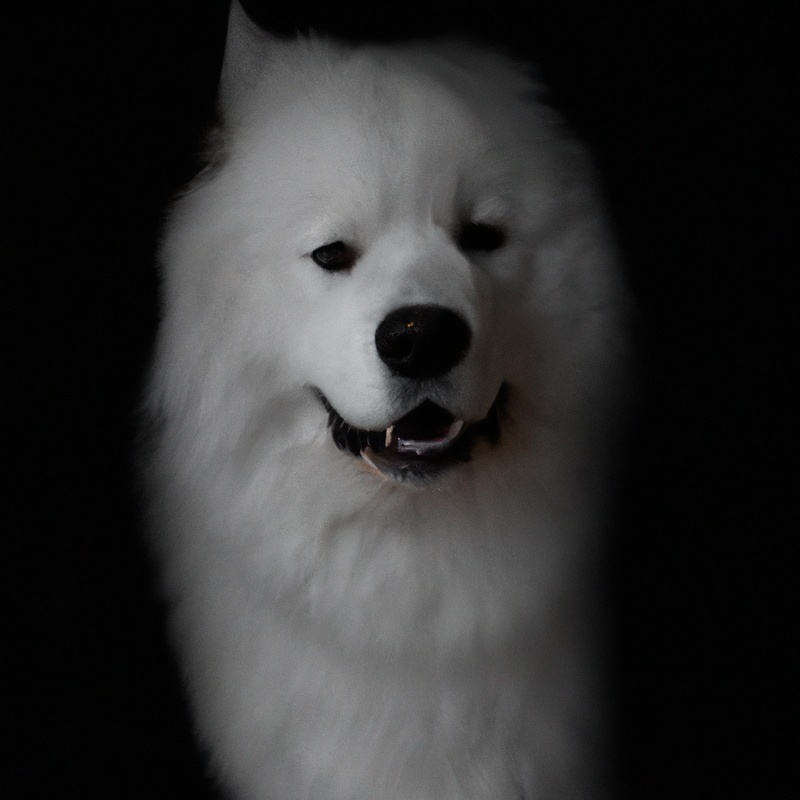
Excitement and seeking attention
Samoyeds are known for their playful and outgoing nature.
When they jump on visitors, it’s often due to excitement and a desire for attention.
They see visitors as a source of stimulation and connection.
To address this behavior, it’s important to redirect their energy and provide alternate outlets for their excitement.
Teaching the “sit” command and rewarding calm behavior can help them learn appropriate greetings.
Consistent training, exercise, and mental stimulation are key to keeping your Samoyed engaged and satisfied.
Positive reinforcement and patience are key in addressing their excitement and seeking attention.
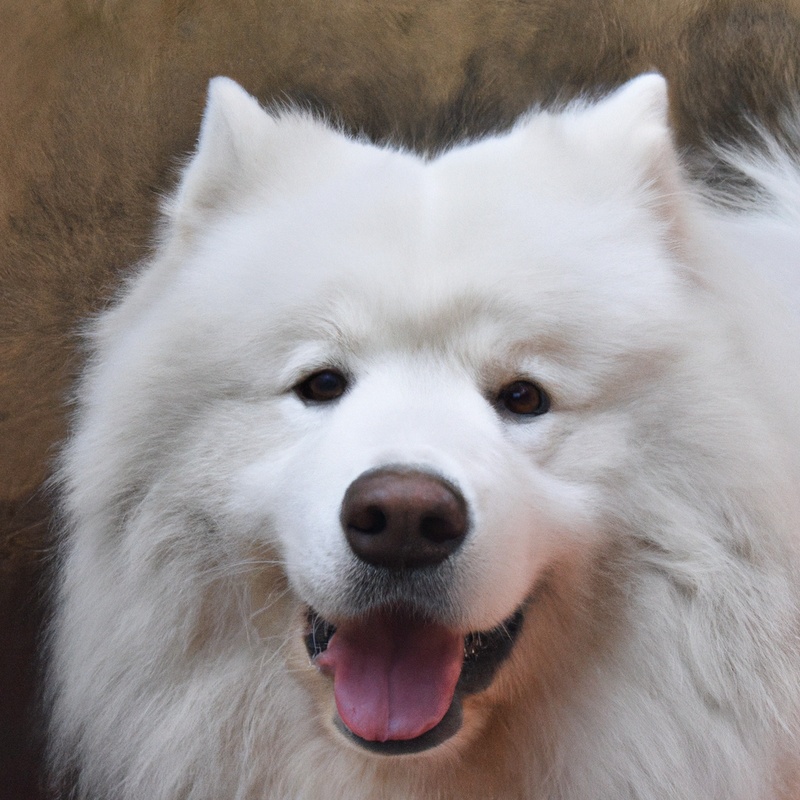
Lack of training or reinforcement
Lack of training or reinforcement can be a major factor in why Samoyeds jump on visitors. When a dog has not been properly trained or reinforced, they may not understand that jumping is unwanted behavior.
By not consistently teaching and reinforcing appropriate behavior, the dog may not have learned an alternative way to greet visitors.
It’s important to provide consistent training and reinforcement to prevent jumping.
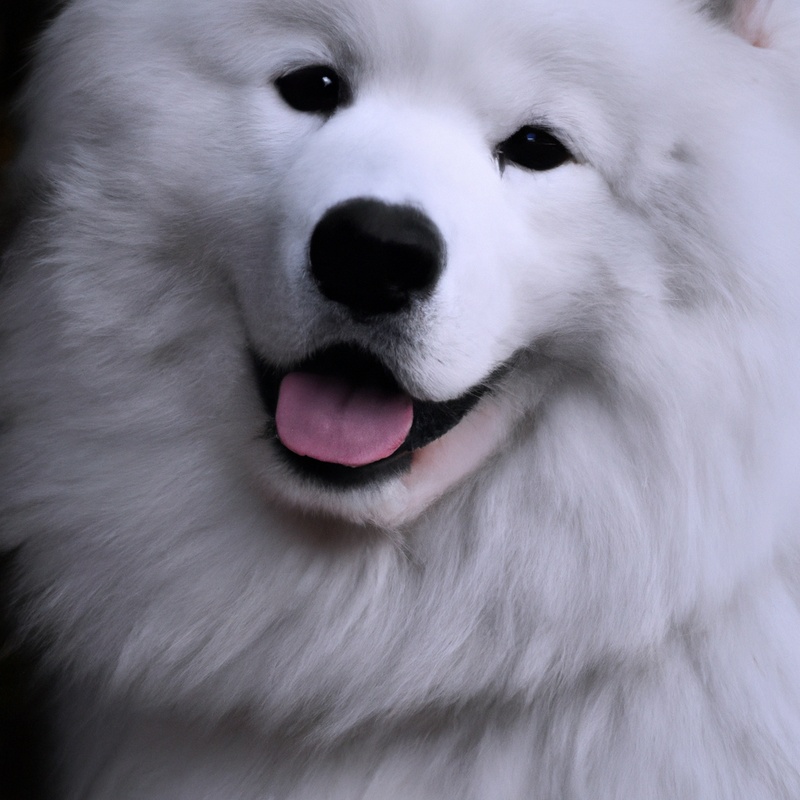
The importance of preventing Samoyeds from jumping
Avoiding potential injuries
To avoid potential injuries when your Samoyed jumps on visitors, there are a few things you can do.
Firstly, make sure to train your dog to follow commands such as “sit” or “stay” to redirect their attention.
Secondly, provide an alternative behavior for your Samoyed to engage in, such as grabbing a toy or playing a game.
Thirdly, create a designated area for your dog to greet visitors where jumping is not allowed, such as a mat or a specific spot.
Remember to reward your dog for good behavior to reinforce positive habits.
Maintaining a calm and controlled environment
To maintain a calm and controlled environment, it’s important to establish clear boundaries and routines for your Samoyed.
Consistency is key.
Make sure to provide plenty of exercise and mental stimulation to prevent boredom and excess energy.
Practice obedience training and reward good behavior to reinforce positive habits.
Use positive reinforcement techniques and redirect unwanted jumping behavior.
Setting up designated areas for resting and playing can also help create a more peaceful atmosphere.
Remember, a calm and controlled environment starts with consistent training and a structured routine.
Establishing good behavior and obedience
Establishing good behavior and obedience in Samoyeds is essential for their well-being and your peace of mind. Consistency is key when setting rules and boundaries.
Use positive reinforcement to reward good behavior and discourage unwanted actions.
Regular exercise and mental stimulation will help channel their energy positively. Training sessions should be short, focused, and fun.
Socialize your Samoyed from a young age to ensure they are well-behaved around people and other animals.
Remember, patience and persistence are vital when establishing good behavior and obedience in your Samoyed.
Training methods to prevent jumping
Basic obedience training
Basic obedience training is essential for preventing your Samoyed from jumping on visitors.
Start by teaching them the “sit” command.
Use positive reinforcement, such as treats or praise, to reward them when they sit and remain calm.
Gradually increase the distractions and practice in different environments to reinforce the training.
Additionally, teach your Samoyed to greet visitors calmly by practicing the “down” command.
Consistency and patience are key to successful obedience training.
Teaching alternative commands
Teaching alternative commands is a great way to redirect your Samoyed’s jumping behavior. Start by teaching them a “sit” or “down” command and practice it consistently.
You can also teach them a “stay” command to keep them in place when visitors arrive.
Reward your Samoyed with treats and praise when they follow these commands instead of jumping. It takes time and patience, but with consistent training, your furry friend will learn to greet visitors politely.
Consistency and positive reinforcement
Consistency and positive reinforcement are key in preventing your Samoyed from jumping on visitors.
Remember to be consistent in your training methods, using the same commands and boundaries every time.
This will help your dog understand what is expected of them.
Positive reinforcement, such as treats and praise, is a great way to encourage desired behaviors.
For example, reward your dog when they greet visitors calmly with all four paws on the ground.
By consistently using positive reinforcement, you can teach your Samoyed to stay calm and avoid jumping on guests.
Managing Samoyed behavior during visitor arrivals
Controlled greetings at the door
Controlled greetings at the door are important to prevent Samoyeds from jumping on visitors.
To achieve this, establish a designated “greeting area” away from the door.
Train your Samoyed to wait calmly in this area before approaching visitors.
Use positive reinforcement and rewards to reinforce this behavior.
You can also use a leash or baby gate to prevent your dog from rushing the door.
Consistency and patience are key in teaching your Samoyed controlled greetings.
Crate training and designated areas
Crate training and designated areas are effective strategies for managing your Samoyed’s behavior.
By using a crate, you provide a safe and comfortable space for your dog, making them less likely to jump on visitors.
Designated areas, such as a pet gate or special room, can also be used to confine your Samoyed when you have guests over.
This helps prevent any unwanted jumping and ensures a calm and controlled environment.
Distractions and redirection techniques
To prevent your Samoyed from jumping on visitors, distractions and redirection techniques can be effective.
Here are a few strategies you can try:
- Provide a designated spot: Train your Samoyed to have a specific spot where they go when visitors arrive. This can be a cozy corner or a mat. Reward them with treats or praise when they stay in that spot.
- Use toys or treats: Keep your Samoyed occupied by giving them a toy or treat that they love when visitors arrive. This can divert their attention and discourage jumping.
- Teach an alternative behavior: Train your Samoyed to perform an alternative behavior, such as sitting or shaking paws, when they greet visitors. Reward them for displaying the desired behavior instead of jumping.
- Leash and tether: Consider using a leash or tether when visitors arrive to help control your Samoyed’s movements. This can provide you with more control and prevent jumping.
Remember, consistency and positive reinforcement are key when implementing these techniques.
With time and patience, your Samoyed will learn to greet visitors calmly and politely.
Tips for preventing jumping in Samoyeds
Ignoring jumping behavior
Ignoring jumping behavior in Samoyeds can be an effective strategy.
When your Samoyed jumps on you or visitors, simply turn away without giving them any attention or eye contact.
This sends a message that jumping is not an acceptable behavior.
You can also cross your arms and turn your back to further demonstrate that jumping won’t get them the desired attention.
Consistency is key, so be sure to ignore the behavior every time it happens.
Over time, your Samoyed will learn that jumping doesn’t lead to attention and will stop the behavior.
Encouraging calm behavior before greetings
To encourage calm behavior in your Samoyed before greetings, it’s important to establish a routine.
Start by teaching your dog basic commands like “sit” and “stay.” Practice these commands in a variety of situations, gradually introducing distractions.
Reward your dog for remaining calm and focused.
Additionally, provide mental and physical stimulation through regular exercise and interactive toys.
A tired Samoyed is less likely to become overly excited and jump on visitors.
It’s also helpful to have a designated “quiet space” where your dog can retreat and relax if needed.
Consistency is key.
Be patient and reinforce calm behavior consistently.
With time and practice, your Samoyed will learn to greet visitors in a calm and polite manner.
Using barriers or leashes when necessary
When it comes to preventing your Samoyed from jumping on visitors, using barriers or leashes can be a helpful tool.
By incorporating these measures when necessary, you can control your dog’s behavior and ensure a more pleasant experience for your guests.
Barriers can be used to physically block your dog’s access to certain areas, while leashes allow you to have more control during greetings.
Remember, consistency is key in training your Samoyed to respect boundaries.
Frequently Asked Questions
Why do Samoyeds jump on people?
Samoyeds often jump on people as a display of excitement and affection.
They are known for their friendly and outgoing nature.
Jumping is a way for them to greet you and show their happiness.
It’s also a sign of their high energy levels.
Training and socialization can help teach them more appropriate ways to express their excitement, such as sitting or offering a paw.
Positive reinforcement and consistent training methods can be effective in curbing this behavior.
How can I teach my Samoyed not to jump?
To teach your Samoyed not to jump, consistency is key.
Start by withdrawing attention when your dog jumps, as any form of reaction may encourage the behavior.
Instead, reward your Samoyed for sitting or staying calmly.
Use positive reinforcement techniques, such as treats or praise, and practice obedience commands regularly.
If your dog jumps, redirect the behavior by asking for an alternate command like “sit” or “down.” With time and patience, your Samoyed will learn that keeping all four paws on the ground is the desired behavior.
Are there any specific training devices that can help prevent jumping?
There are several specific training devices that can help prevent jumping in Samoyeds. One option is a no-jump harness, which restricts their ability to lift their front legs off the ground.
Another option is a remote-controlled training collar, which can be used to deliver a mild correction when they try to jump.
You could also try using a tether or leash to control their movement and prevent jumping. It’s important to choose a training device that aligns with your training approach and fits your Samoyed properly.
Final Verdict
Preventing Samoyeds from jumping on visitors is crucial for maintaining a calm and controlled environment while avoiding potential injuries.
This behavior is often a result of their excitement and desire for attention, along with a lack of proper training and reinforcement.
By implementing basic obedience training, teaching alternative commands, and consistently using positive reinforcement, owners can successfully train their Samoyeds to control their jumping behavior.
Additionally, by managing their behavior during visitor arrivals through controlled greetings, crate training, and distraction techniques, owners can create a welcoming environment without the risk of jumping.
Overall, with patience, consistency, and the right techniques, Samoyed owners can effectively prevent this unwanted behavior and have a well-behaved and respectful canine companion.

